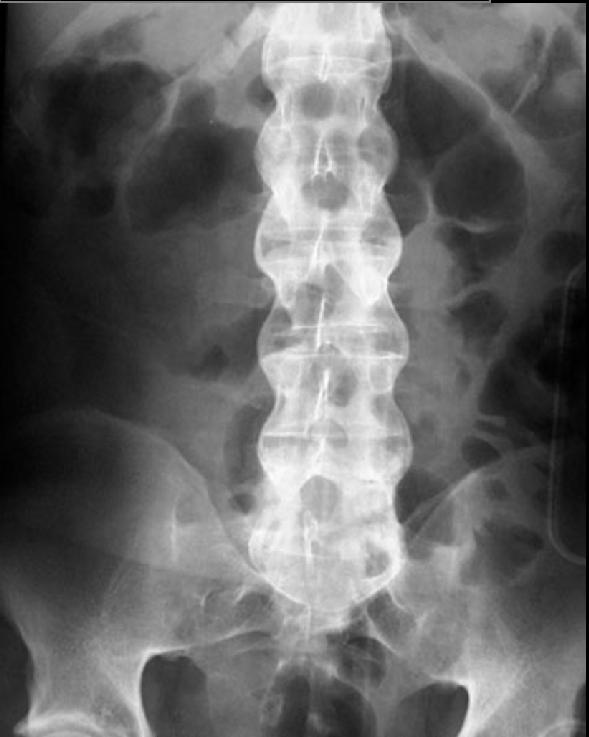Ankylosing spondylitis x ray
|
Ankylosing spondylitis Microchapters |
|
Diagnosis |
|---|
|
Treatment |
|
Case Studies |
|
Ankylosing spondylitis x ray On the Web |
|
American Roentgen Ray Society Images of Ankylosing spondylitis x ray |
|
Risk calculators and risk factors for Ankylosing spondylitis x ray |
Editor-In-Chief: C. Michael Gibson, M.S., M.D. [1]
Overview
A clinical examination and x-rays of the spine, which show characteristic spinal changes such as sacroiliitis, are the major diagnostic tools for ankylosing spondylitis. The findings on an x-ray that are consistent with a diagnosis of ankylosing spondilitis are the presence of subchondral erosions, sclerosis, proliferation on the iliac side of SI joints, and squaring of the vertebral body.
X Ray

- Indistinct joints
- Joints widen before narrow
- Subchondral erosions, sclerosis, and proliferation on iliac side of SI joints
- At endstage, sacroiliac joint may be a thin line or not visible
- In the spine, early spondylitis is characterized by small erosions at the corners of vertebral bodies with reactive sclerosis
- Squaring of the vertebral body
- Syndesmophyte formation, with bridging of the corners of one vertebra to another
- Ossification of paravertebral connective tissue fibers, including posterior interspinous ligaments as well as linking of spinous processes leads to an appearance of a solid midline vertical dense line on AP projection
- May see associated pseudoarthroses (discovertebral destruction with adjacent sclerosis) and enthesopathic changes (ill-defined erosions with adjacent sclerosis at sites of ligamentous and tendenous attachments)
- Hip involvement is generally bilateral and symmetric, with uniform joint space narrowing, axial migration of the femoral head, and a collar of osteophytes at the femoral head-neck junction
- Knees demonstrate uniform joint space narrowing with bony proliferation
- Hands are generally involved asymmetrically, with smaller, shallower erosions and marginal periostitis.
- Radiographs of the lungs may demonstrate progressive fibrosis and bullous changes at the apices. These lesions may resemble TB infection and bullae may become infected.
-
Bamboo Spine
A drawback of X-ray diagnosis is that signs and symptoms of AS have usually been established as long as 8-10 years prior to X-ray evident changes occurring on a plain film X-ray, which means a delay of as long as 10 years before adequate therapies can be introduced.
